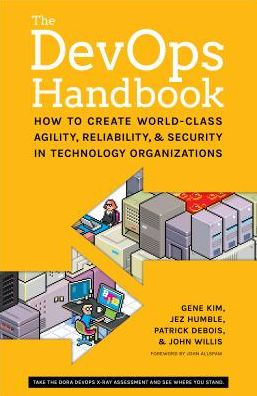5
1

The DevOps Handbook: How to Create World-Class Agility, Reliability, and Security in Technology Organizations
480
The DevOps Handbook: How to Create World-Class Agility, Reliability, and Security in Technology Organizations
480Paperback(New Edition)
$24.95
$27.95
Save 11%
Current price is $24.95, Original price is $27.95. You Save 11%.
24.95
In Stock

Product Details
| ISBN-13: | 9781942788003 |
|---|---|
| Publisher: | IT Revolution Press |
| Publication date: | 10/06/2016 |
| Edition description: | New Edition |
| Pages: | 480 |
| Product dimensions: | 5.90(w) x 8.90(h) x 1.10(d) |
About the Author
From the B&N Reads Blog
